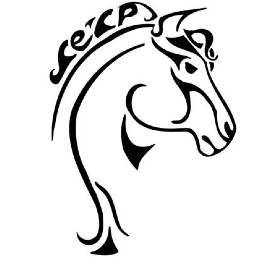Definitions: These definitions are for your information only. They are provided by PATH International.
Equine-Assisted Activities (EAA)
Equine-assisted activities are any specific center activity, e.g… therapeutic riding, mounted or ground activities, grooming and stable management, shows, parades, demonstrations, etc., in which the center’s clients, participants, volunteers, instructors, and equines are involved.
Equine-Assisted Therapy (EAT)
Equine-assisted therapy is a treatment that incorporates equine activities and/or the equine environment. Rehabilitative goals are related to the patient’s needs and the medical professional’s standards of practice.
Equine-Assisted Learning (EAL)
Equine-assisted learning (EAL) is an experiential learning approach that promotes the development of life skills for educational, professional and personal goals through equine-assisted activities.
Equine-Facilitated Psychotherapy (EFP)
EFP is defined as an interactive process in which a licensed mental health professional working with or as an appropriately credentialed equine professional, partners with suitable equine(s) to address psychotherapy goals set forth by the mental health professional and the client.
Hippotherapy
The American Hippotherapy Association, Inc. defines hippotherapy as a physical, occupational, or speech therapy treatment strategy that utilizes equine movement. The word hippotherapy derives from the Greek word hippos, meaning horse. The term hippotherapy refers to the use of the movement of the horse as a treatment strategy by physical therapists, occupational therapists, and speech/language pathologists to address impairments, functional limitations, and disabilities in patients with neuromotor and sensory dysfunction. This treatment strategy is used as part of an integrated treatment program to achieve functional goals.
Interactive Vaulting
Interactive Vaulting is an activity in which the students perform movements on and around the horse. These movements can be very simple such as sitting without holding onto the surcingle or a more elaborate vaulting position move such as kneeling or standing on the horse. It all depends on the individual needs of the vaulter.
Therapeutic Driving
Carriage Driving offers students with physical, mental, sensory, or emotional disabilities the rewards of interaction and control of a horse or pony while driving from a carriage seat or in their own wheelchair in a carriage modified to accommodate their wheelchair.
Therapeutic Riding
Therapeutic riding is an equine-assisted activity for the purpose of contributing positively to the cognitive, physical, emotional, and social well-being of individuals with special needs.
______________________________________________________________________________
Centro Ecuestre Caballerizas Paraiso, A.C. does NOT provide all of these therapies at this time. However, we endeavor to work toward that goal. If you are a professional in one of the aforementioned fields and would like to volunteer, please contact us at: Lynn@horsesinbaja.com
